Abstract
In a discrete-trial procedure, pigeons could choose between 2-s and 6-s access to grain by making a single key peck. In Phase 1, the pigeons obtained both reinforcers by responding on fixed-ratio schedules. In Phase 2, they received both reinforcers after simple delays, arranged by fixed-time schedules, during which no responses were required. In Phase 3, the 2-s reinforcer was available through a fixed-time schedule and the 6-s reinforcer was available through a fixed-ratio schedule. In all conditions, the size of the delay or ratio leading to the 6-s reinforcer was systematically increased or decreased several times each session, permitting estimation of an "indifference point," the schedule size at which a subject chose each alternative equally often. By varying the size of the schedule for the 2-s reinforcer across conditions, several such indifference points were obtained from both fixed-time conditions and fixed-ratio conditions. The resulting "indifference curves" from fixed-time conditions and from fixed-ratio conditions were similar in shape, and they suggested that a hyperbolic equation describes the relation between ratio size and reinforcement value as well as the relation between reinforcer delay and its reinforcement value. The results from Phase 3 showed that subjects chose fixed-time schedules over fixed-ratio schedules that generated the same average times between a choice response and reinforcement.
Full text
PDF
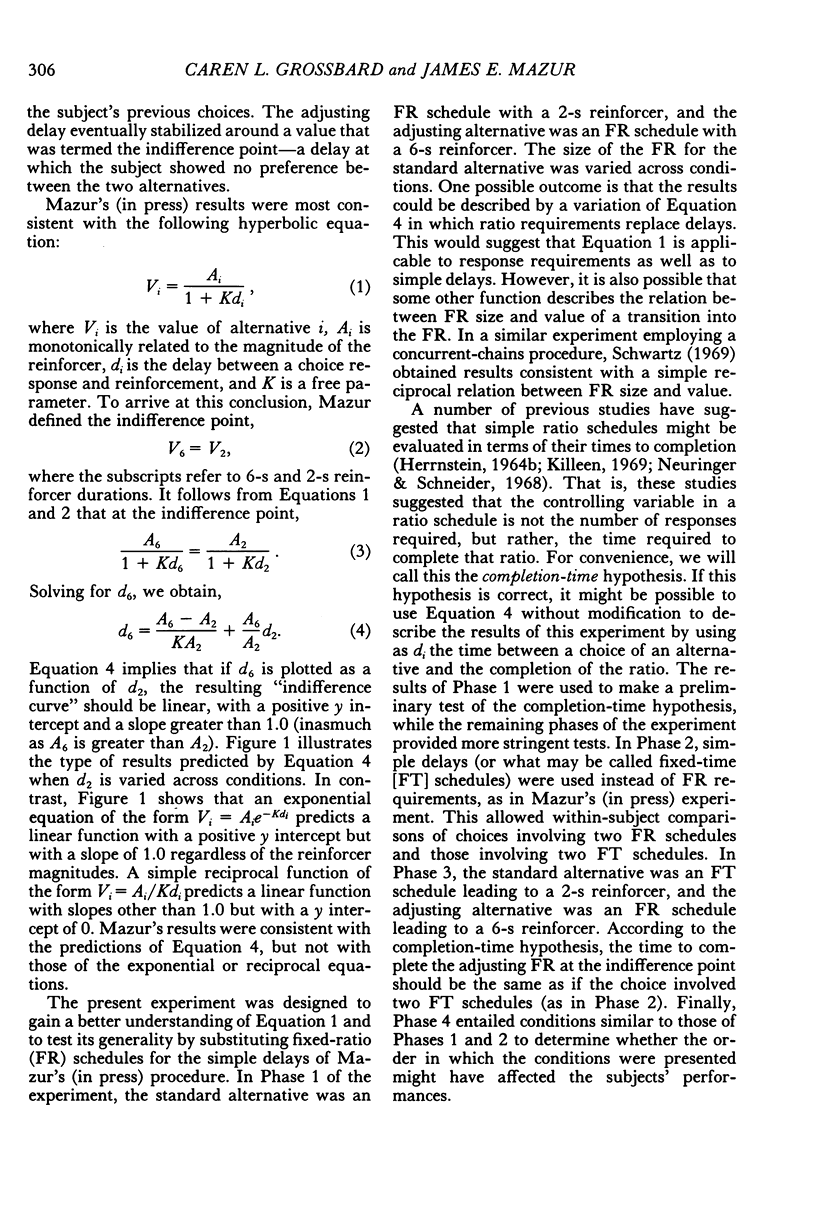
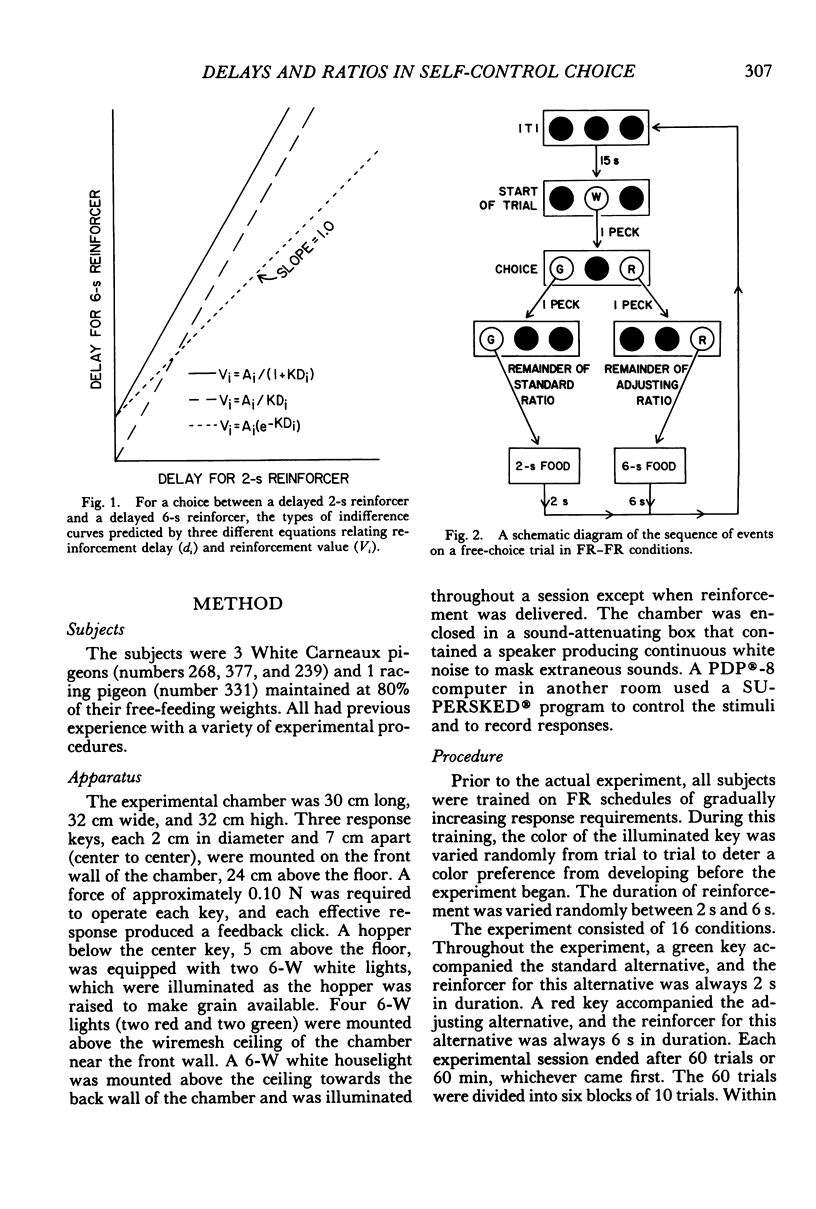
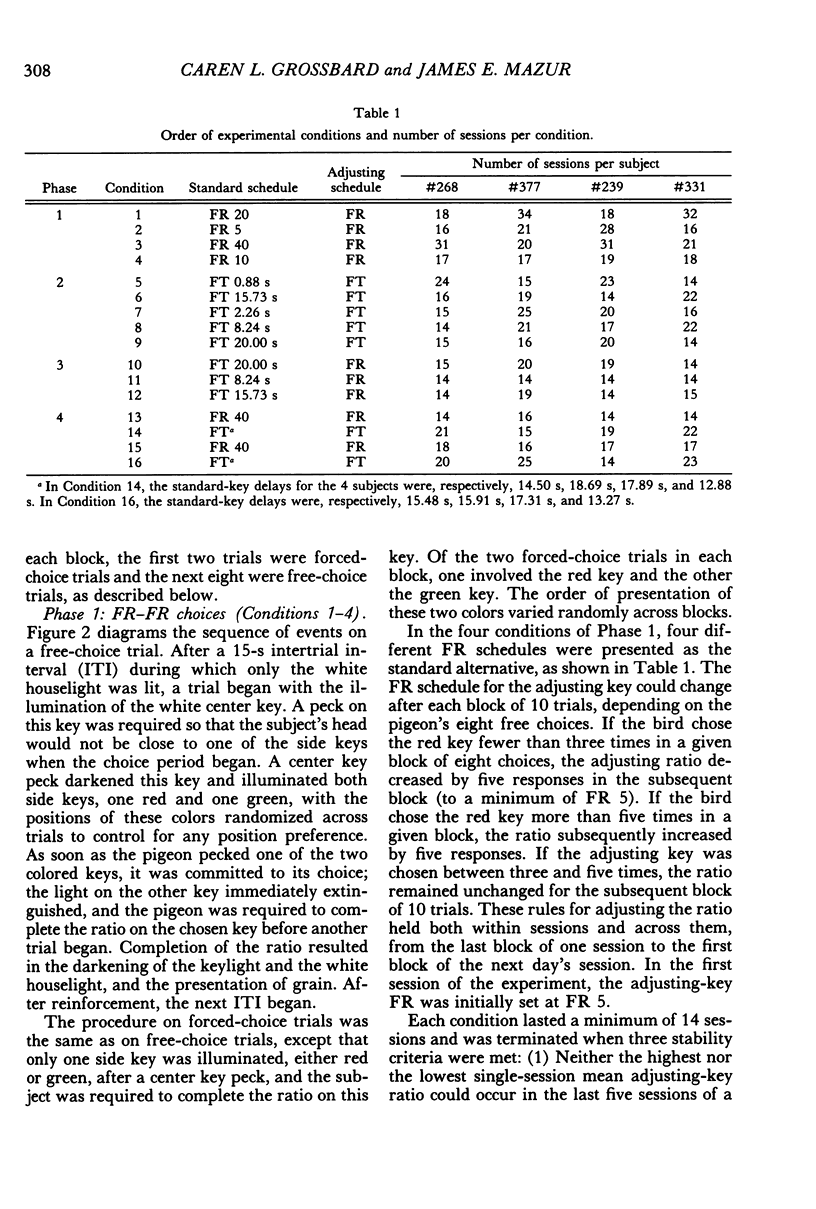
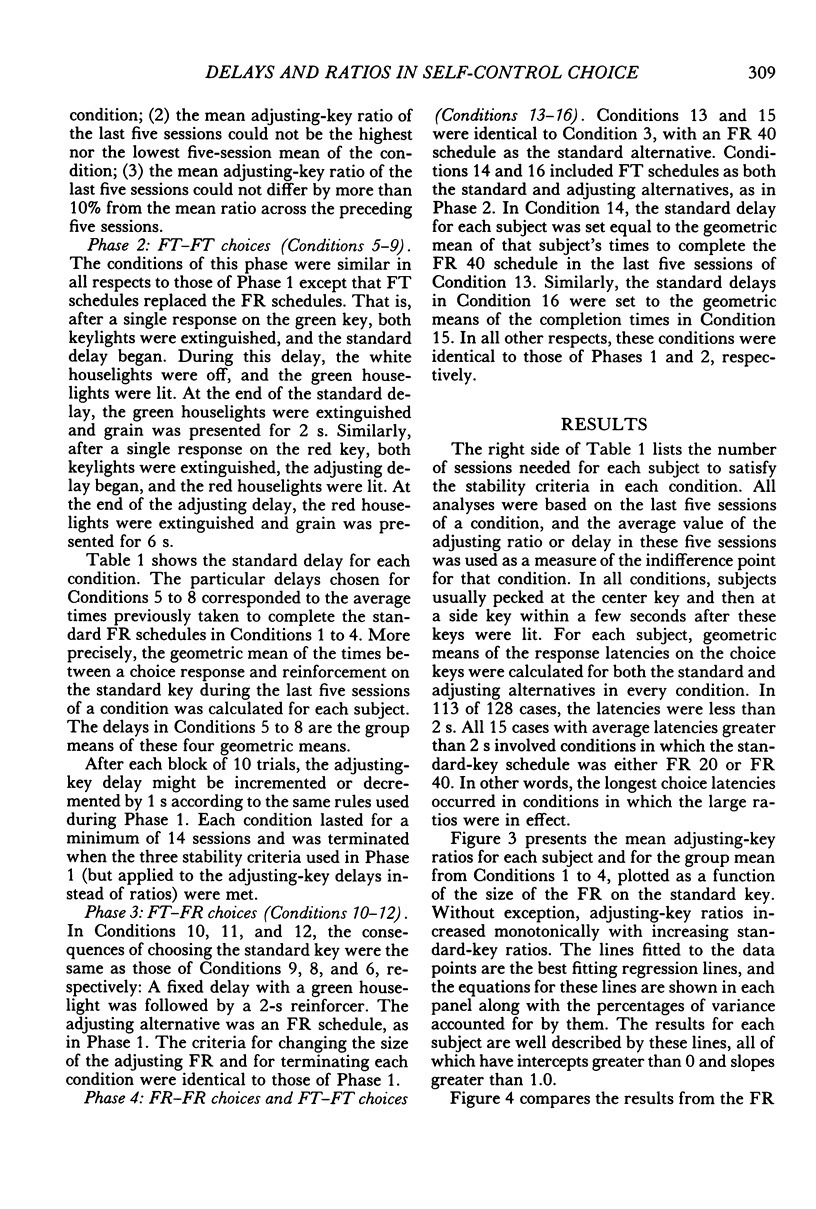
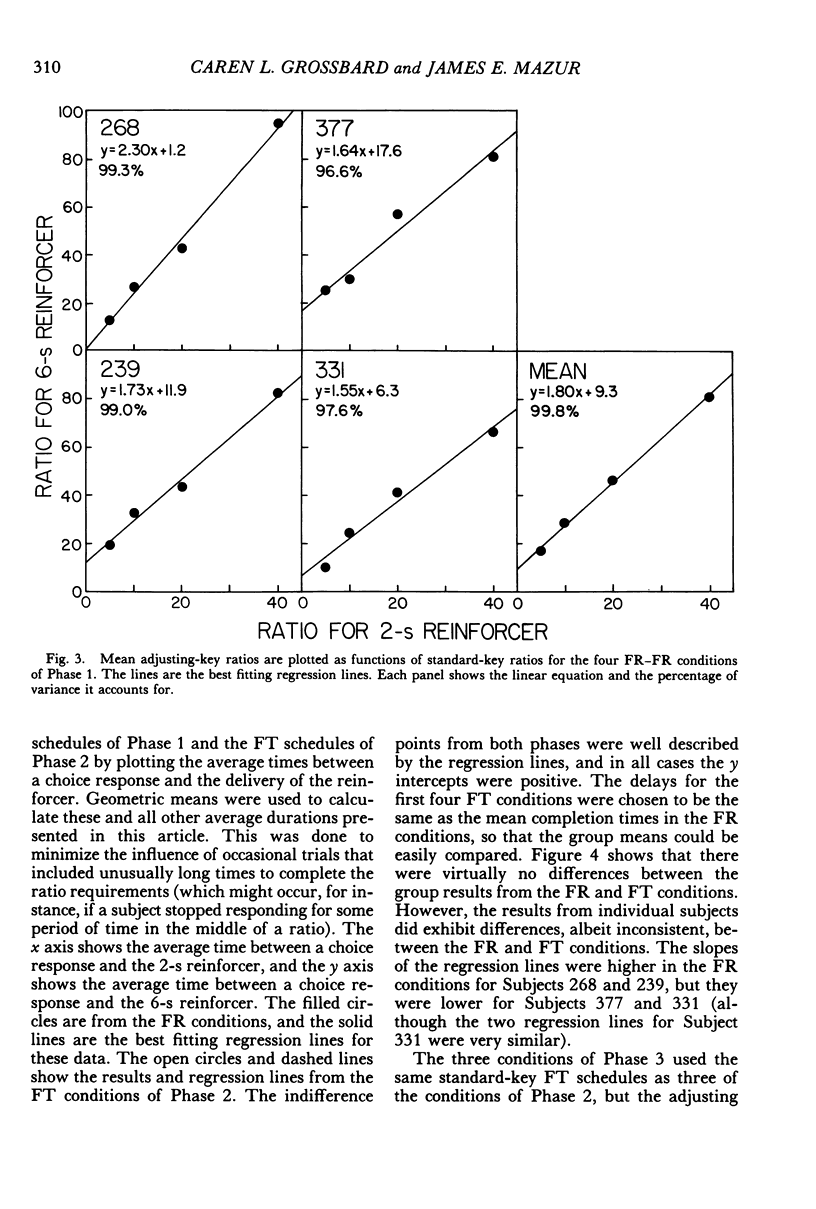
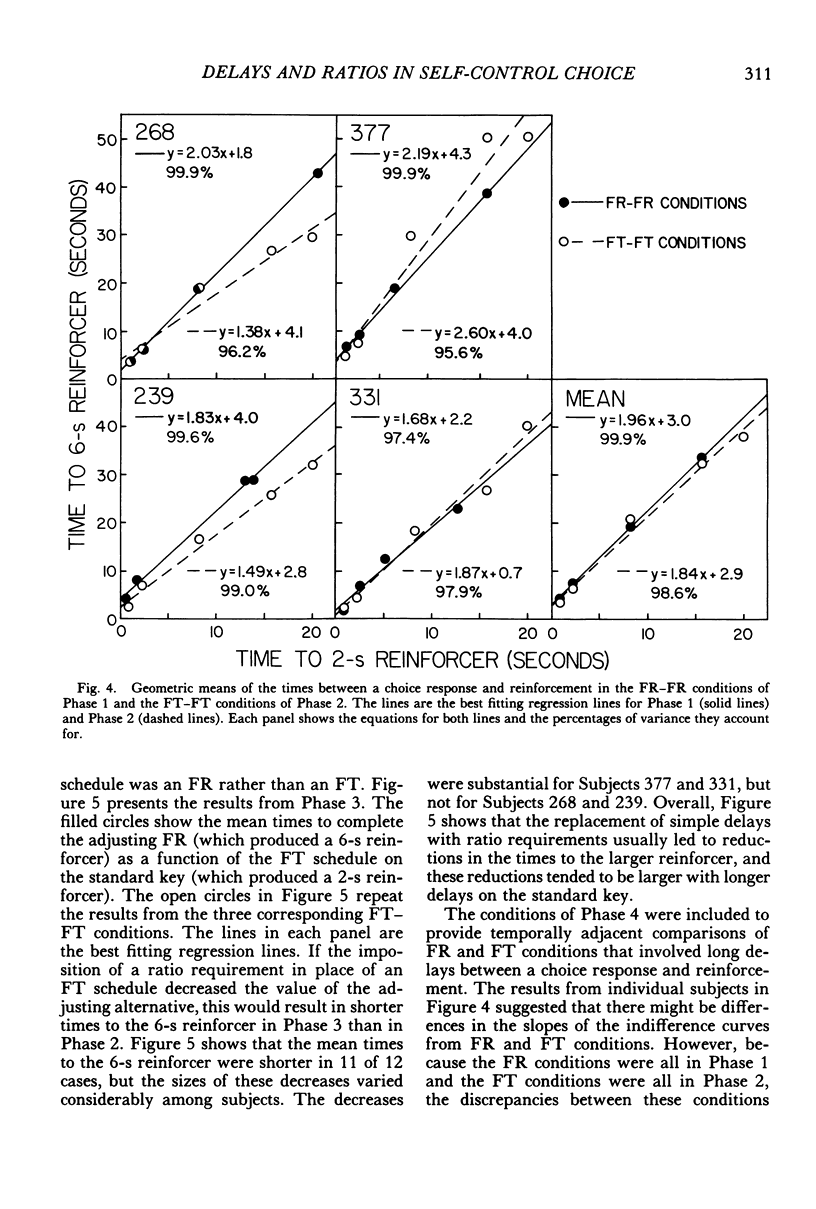
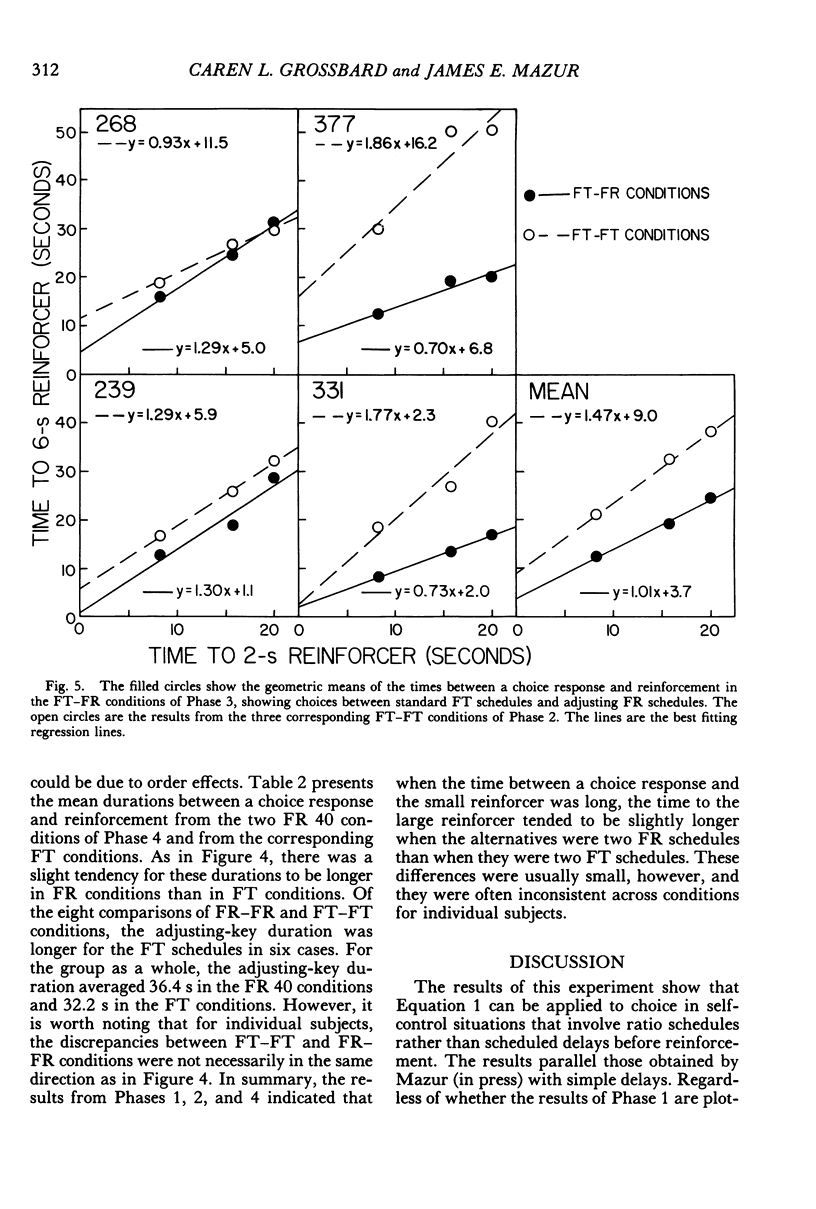
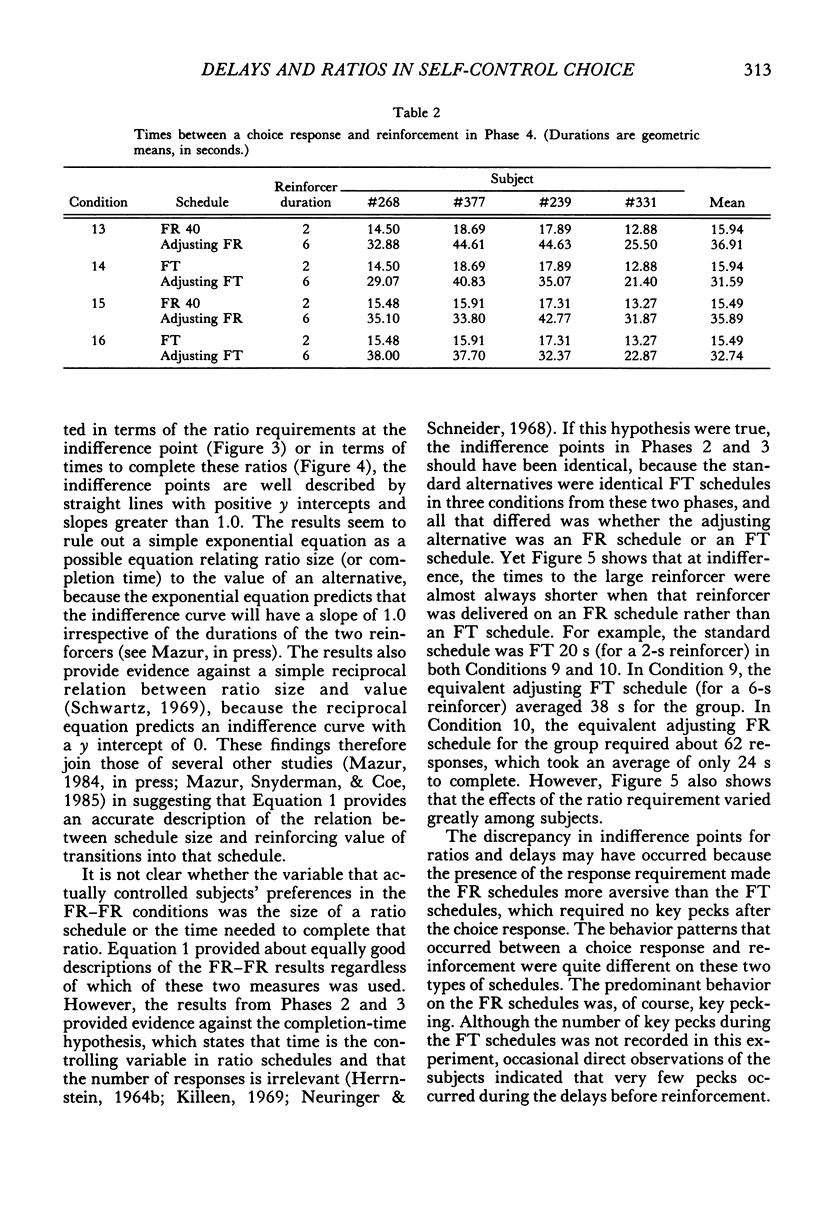

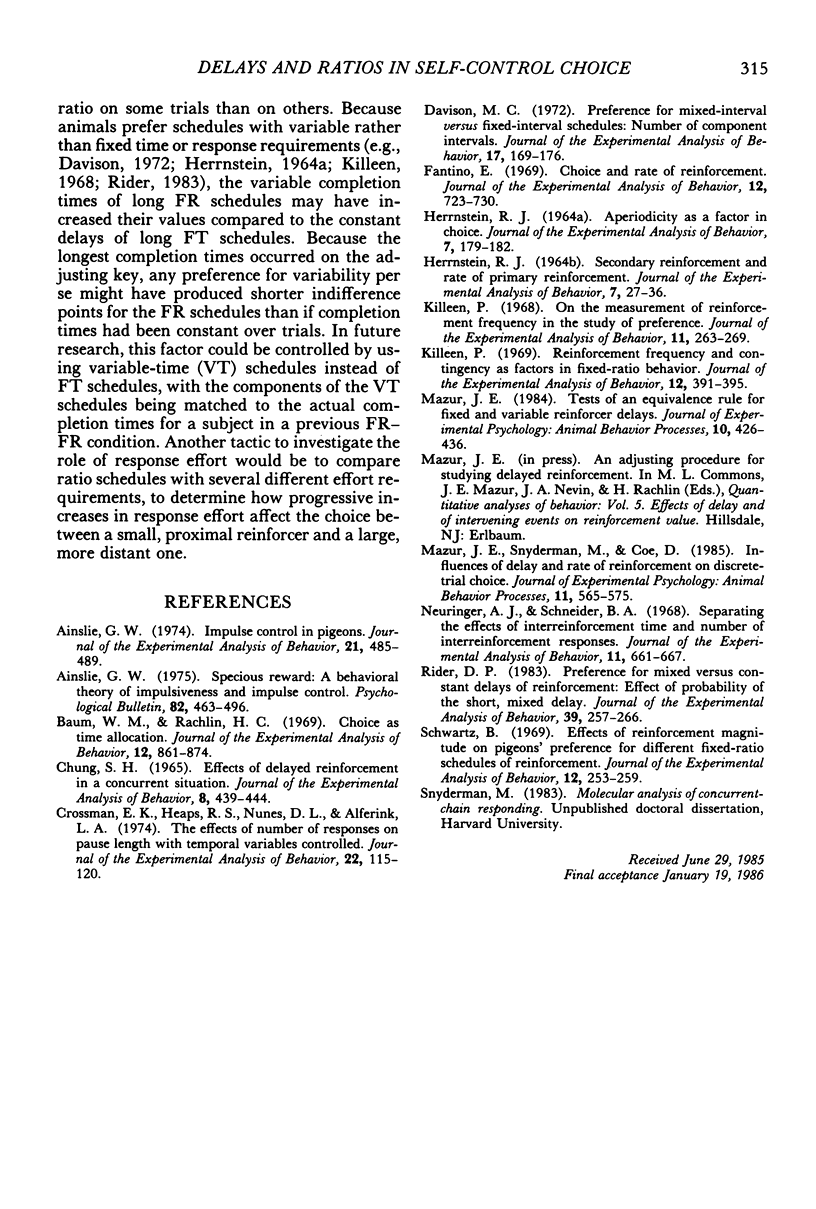
Selected References
These references are in PubMed. This may not be the complete list of references from this article.
- Ainslie G. W. Impulse control in pigeons. J Exp Anal Behav. 1974 May;21(3):485–489. doi: 10.1901/jeab.1974.21-485. [DOI] [PMC free article] [PubMed] [Google Scholar]
- Ainslie G. Specious reward: a behavioral theory of impulsiveness and impulse control. Psychol Bull. 1975 Jul;82(4):463–496. doi: 10.1037/h0076860. [DOI] [PubMed] [Google Scholar]
- Baum W. M., Rachlin H. C. Choice as time allocation. J Exp Anal Behav. 1969 Nov;12(6):861–874. doi: 10.1901/jeab.1969.12-861. [DOI] [PMC free article] [PubMed] [Google Scholar]
- Chung S. H. Effects of delayed reinforcement in a concurrent situation. J Exp Anal Behav. 1965 Nov;8(6):439–444. doi: 10.1901/jeab.1965.8-439. [DOI] [PMC free article] [PubMed] [Google Scholar]
- Crossman E. K., Heaps R. S., Nunes D. L., Alferink L. A. The effects of number of responses on pause length with temporal variables controlled. J Exp Anal Behav. 1974 Jul;22(1):115–120. doi: 10.1901/jeab.1974.22-115. [DOI] [PMC free article] [PubMed] [Google Scholar]
- Davison M. C. Preference for mixed-interval versus fixed-interval schedules: number of component intervals. J Exp Anal Behav. 1972 Mar;17(2):169–176. doi: 10.1901/jeab.1972.17-169. [DOI] [PMC free article] [PubMed] [Google Scholar]
- Fantino E. Choice and rate of reinforcement. J Exp Anal Behav. 1969 Sep;12(5):723–730. doi: 10.1901/jeab.1969.12-723. [DOI] [PMC free article] [PubMed] [Google Scholar]
- HERRNSTEIN R. J. APERIODICITY AS A FACTOR IN CHOICE. J Exp Anal Behav. 1964 Mar;7:179–182. doi: 10.1901/jeab.1964.7-179. [DOI] [PMC free article] [PubMed] [Google Scholar]
- HERRNSTEIN R. J. SECONDARY REINFORCEMENT AND RATE OF PRIMARY REINFORCEMENT. J Exp Anal Behav. 1964 Jan;7:27–36. doi: 10.1901/jeab.1964.7-27. [DOI] [PMC free article] [PubMed] [Google Scholar]
- Killeen P. On the measurement of reinforcement frequency in the study of preference. J Exp Anal Behav. 1968 May;11(3):263–269. doi: 10.1901/jeab.1968.11-263. [DOI] [PMC free article] [PubMed] [Google Scholar]
- Killeen P. Reinforcement frequency and contingency as factors in fixed-ratio behavior. J Exp Anal Behav. 1969 May;12(3):391–395. doi: 10.1901/jeab.1969.12-391. [DOI] [PMC free article] [PubMed] [Google Scholar]
- Mazur J. E., Snyderman M., Coe D. Influences of delay and rate of reinforcement on discrete-trial choice. J Exp Psychol Anim Behav Process. 1985 Oct;11(4):565–575. [PubMed] [Google Scholar]
- Neuringer A. J., Schneider B. A. Separating the effects of interreinforcement time and number of interreinforcement responses. J Exp Anal Behav. 1968 Nov;11(6):661–667. doi: 10.1901/jeab.1968.11-661. [DOI] [PMC free article] [PubMed] [Google Scholar]
- Rider D. P. Preference for mixed versus constant delays of reinforcement: Effect of probability of the short, mixed delay. J Exp Anal Behav. 1983 Mar;39(2):257–266. doi: 10.1901/jeab.1983.39-257. [DOI] [PMC free article] [PubMed] [Google Scholar]
- Schwartz B. Effects of reinforcement magnitude on pigeons' preference for different fixed-ratio schedules of reinforcement. J Exp Anal Behav. 1969 Mar;12(2):253–259. doi: 10.1901/jeab.1969.12-253. [DOI] [PMC free article] [PubMed] [Google Scholar]


